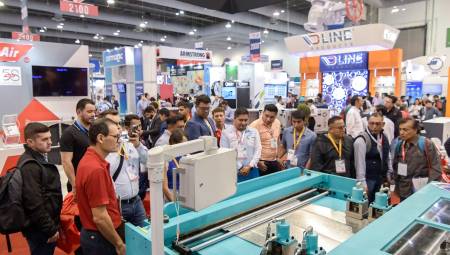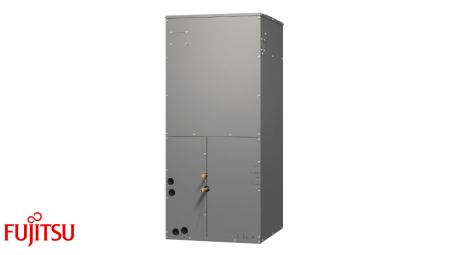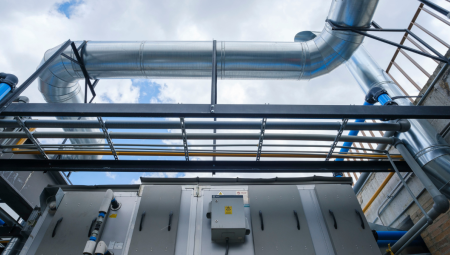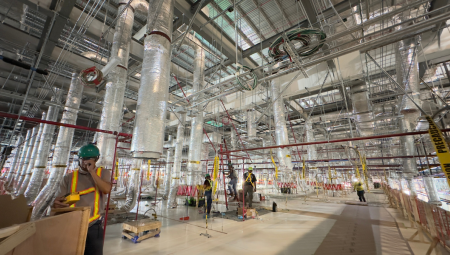 A good indoor air quality allows the best performance of personnel who remain for a long time in commercial or industrial installation. Learn about the benefits of implementing a good HVAC system to identify sick building syndrome.
by Lennox
A good indoor air quality allows the best performance of personnel who remain for a long time in commercial or industrial installation. Learn about the benefits of implementing a good HVAC system to identify sick building syndrome.
by Lennox
The U.S. Environmental Protection Agency notes that indoor air pollution can be five to a hundred times higher than the level of outdoor pollution.
As new research continues to emerge on the relationship between indoor health and environmental risks and as new green building standards have become more stringent, the fight against poor indoor air quality (IAQ) has become a constant task of building design and inspection.
While it is true that each type of commercial construction, from retail stores to restaurants, warehouses, hospitals and schools, has different needs, taking steps to prevent iaq deterioration can have a lasting positive impact on employees and residents, such as:
- Reduction of operating costs.
- Improvement of health and productivity.
- Decrease in absenteeism.
- Increased levels of learning and student performance.
- Decrease in employee health complaints.
- A more positive experience for construction visitors and customers.
Although the cost savings resulting from better indoor air are more difficult to quantify than those associated with water conservation or the use of clean energy, iaQ undoubtedly offers significant and measurable financial benefits.
According to an economic impact study conducted by Lawrence Berkeley National Laboratory, a 20-50% reduction in symptoms associated with sick building syndrome can mean savings ranging from $10 billion to $100 billion. By controlling proper water quality, asthma can be reduced by 8-25%, other respiratory diseases can be reduced by 23-76%, and worker productivity can be increased by 5-5%.
There's good news for today's construction company owners: Air quality can be improved by taking steps to detect contaminants in buildings such as molds and bacteria, volatile organic compounds (VOCs), and airborne chemicals from combustion appliances. Today's HVAC equipment can play an important role in improving indoor air quality, as it has the ability to balance humidity levels, provide adequate ventilation, and reduce or eliminate contaminants.
Here's an outline of how these factors can be improved by using the right HVAC equipment:
Humidity control
Keeping humidity levels in check helps preserve customer comfort and employee productivity. Because ASHRAE 90.1 energy and 62.1 ventilation standards and the 2007 ASHRAE applications increasingly require that outside air be introduced into buildings — at lower dew points and with less energy expenditure — buildings need a system that can easily control humidity levels.
Too much humidity in a building causes high levels of relative humidity, a load that can sometimes equalize the energy load. It can also cause mold growth and the spread of airborne bacteria and viruses. Today's building designs—along with ASHRAE regulations—are causing construction professionals to rethink the traditional strategy of supercooling supply air and reheating it to remove excess moisture.
While this old strategy uses large amounts of extra energy, there are simpler ways to introduce moisture control using different types of HVAC equipment. Several HVAC equipment manufacturers offer dehumidification systems for roof units that remove moisture based on relative humidity levels rather than temperature, helping to prevent the growth of molds and bacteria, while controlling the spread of allergens.
While upgrade systems are more expensive than traditional units, engineers are understanding how valuable it is to treat outside air and be able to reduce the space requirements of outdoor air conditioning units. With smart controls such as the Prodigy® unit controller, which are installed in outdoor systems, greater energy savings and better humidity and temperature control can be easily achieved.
Ventilation
Products that offer fresh air ventilation, such as energy recovery fans, help protect the health of customers and employees by improving indoor air quality by diluting pollutants, reducing the concentration of odors and volatile organic compounds (VOCs), and delivering fresh air indoors, depending on the design of the building or its occupancy levels.
Reduction of contaminants
There are three main types of air pollutants:
1. Particles (pollen, dust mites, dirt and dandruff).
2. Bioaerosols.
3. Odors and/or chemical vapors (smoke, chlorine, cleaning products and paints).
The size of the contaminants ranges from .01 to 100 microns. The smallest pollutants (below 2.5 microns) are the most dangerous, as they can reach the deepest parts of the lungs and then enter the bloodstream.
Products such as UVC germicidal light lamps are designed to safely optimize light on the surface of the coils of commercial ceiling units and reduce concentrations of mold, bacteria and fungi, as well as preserve system efficiency.
High-performance air filters can also play an important role in indoor comfort, reducing concentrations of pollen, dust mites, dirt, mold, spores, fungi, odors, and chemicals. In addition, these filters can help protect furniture and prevent discoloration of the walls and ceilings of the building.













